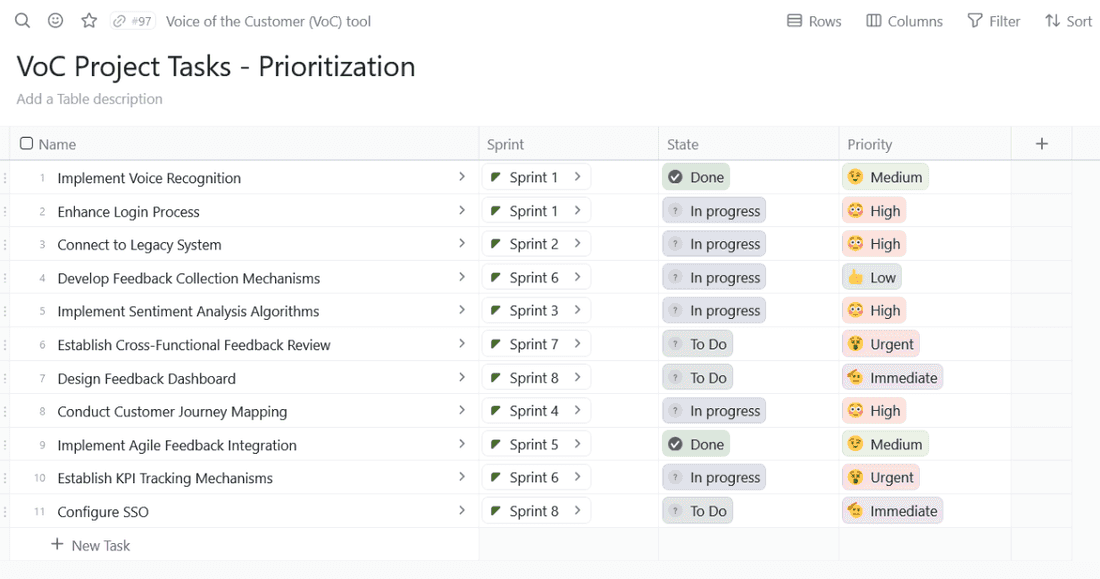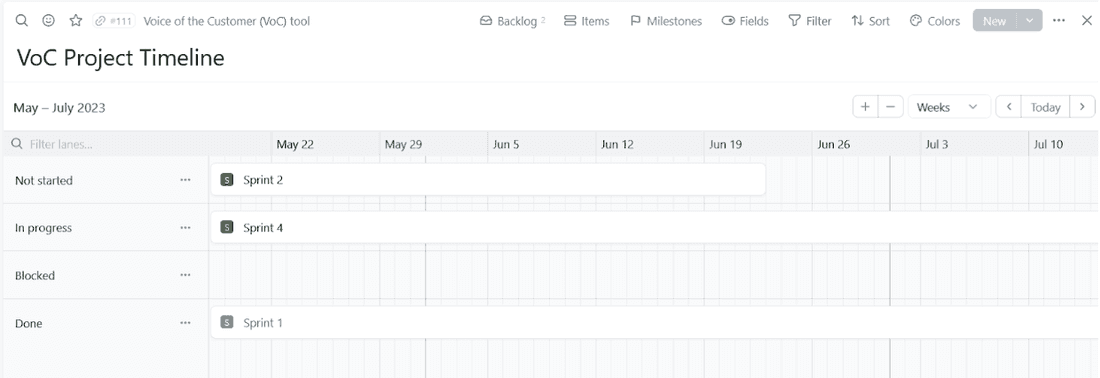How to Create a Roadmap in Product Management
Just like planning out a real road trip, creating a roadmap doesn’t simply mean sketching a direct path to glory.
There are many twists and turns, narrow streets and highways, and, most importantly—more than one way to get to your destination.
With this in mind, we’re not just giving another Roadmap 101 overview. We’re diving deeper, aiming at why crafting this map matters and how it’s done with actionable wisdom.
What’s on the agenda:
- The pivotal reasons behind developing a robust roadmap.
- A no-nonsense walk-through for creating one that really guides decisions rather than gathering dust as office art.
- An exploration of tools that refine the road mapping process, shifting it from educated guesswork to strategic foresight.
Road mapping is an essential component of the product manager tool kit, so even though you’ve likely created hundreds in your time, you’re bound to learn something new here. So, let’s read on and lift the lid on a product management staple.
Why Should You Create a Roadmap?
Creating a roadmap is an essential exercise in strategic foresight and operational alignment within product management. It serves as a critical framework that guides both the tactical and strategic decisions of a product team.
Here’s a breakdown of the value of road mapping:
Strategic Alignment
A well-crafted roadmap ensures that every sprint, update, or feature is a step toward wider business targets. It creates clarity within teams, from developers to marketers, with each member grasping their contribution’s impact on the greater canvas.
Communicating Vision and Strategy
By converting broad strokes into precise actions, a roadmap offers stakeholders across all levels. Essentially, it’s a transparent view of where the product is headed. This transparency cements collective commitment to forward motion.
Focused Prioritization
Amidst resource constraints and ticking clocks, it compels discernment whereby features are weighed for relevance against organizational ambitions. Roadmaps also act as gatekeepers against over-extension by channeling resources toward impactful pursuits.
Roadmaps aren’t just superfluous and procedural paperwork, they are pivotal in shaping robust ecosystems around products, one decision at a time, and with lasting achievement as their north star.
Step 1: Define Your Objectives
Begin with clarity. Determine the why and what that will guide your roadmap. This is the moment to identify your ultimate goal and justify the timing. Avoid random feature generation. Instead, establish a clear trajectory from the current status to the desired outcome.
This foundational effort converts your roadmap into a strategic instrument for navigation rather than just an elaborate checklist. It unifies your team around a shared goal, ensuring alignment not only on actions but also on purpose.
When you articulate objectives distinctly, you’re laying down expectations encompassing scope, timelines, and rationale. Everyone understands their priorities within this grander vision.
The example below, created in Fibery, is a list of objectives and rationale for a typical project roadmap.

Such clarity forms the backbone of any robust roadmap, ensuring every development step fortifies part of your overarching strategy.
In this way, you’re not merely planning but carefully charting out an intentional path toward triumph informed by profound insight.
Step 2: Engage Your Team for Insight
Envision your roadmap as the product of collective wisdom, crafted by many hands rather than dictated from above.
It’s about integrating insights from every corner of your company, be it sales, support, or engineering, and crucially, incorporating input from those who use what you build.
This step is where inclusivity meets discernment.
Balance here is key. Open the floor to a wide range of voices while keeping an eye on strategic direction. Seek out diverse perspectives and welcome feedback to sculpt a roadmap that’s not just in sync with business goals but also attuned to customer needs and technically sound.
This collaborative approach does more than simply diversify viewpoints, it authenticates ownership and partnership across departments.
It ensures that everyone has a stake in the journey ahead, co-creating an itinerary that’s well-rounded, achievable, and embraced by all involved.
Step 3: Sharpen Your Focus
Get your edit pen out. The roadmap isn’t an endless wish list. You must exercise judgment and restraint, identifying what essentials forge ahead and which ideas must wait their turn.
Prioritization is critical. Whether you harness methodologies like RICE, MoSCoW, or another system, balance anticipated impact with the necessary exertion.
You’ll need to filter out distractions during this phase, spotlighting indispensable priorities versus those that simply embellish. It demands aligning each element tightly with your core objectives so every chosen feature propels you closer toward broader aspirations.
In the example below, which was created using Fibery, prioritization and roadmap tasks are easily identified. This is the kind of operational roadmap that you should aim for.

What emerges from this rigorous selection? A streamlined roadmap devoid of excesses and laser-focused on progression with intent. Fine-tune your product narrative, with each chapter advancing purposefully towards a climax.
This discipline ensures your plan remains tethered to strategy rather than becoming an archive of unrealized ambitions.
Step 4: Set Timelines with Agility
Here’s where planning meets reality. Setting timelines is an exercise in balancing precision with the ability to pivot as needed. Acknowledge that while we can predict and plan, adaptability remains a cornerstone of successful execution.
This stage is about being spot on with your delivery schedules, simultaneously allowing space for unforeseen changes.

Flexibility and agility are essential in the fluid nature of business and technology. Recognize that while you chart out deadlines for initiatives, adjustments may be required to steer through unexpected challenges or opportunities.
By establishing time frames thoughtfully yet acknowledging the potential need for course correction, you demonstrate commitment to meeting objectives and wisdom in navigating the dynamic landscape ahead.
The Best Tools for Creating a Roadmap
Let’s talk gear. While a roadmap can technically start on the back of a napkin, scaling that into something workable requires the right tools.
Here are a few standouts:
- Fibery: Not just because we’re biased, but because it genuinely bridges the gap between ideation and execution, offering a flexible platform to adapt as your product and strategy evolve.
- Aha!: Great for those who love detail and structure, offering robust road mapping capabilities with a focus on strategy.
- Trello: For the visually inclined, Trello’s simplicity and flexibility make it a great tool for creating and sharing roadmaps that are easy to understand at a glance.
- Productboard: A solid option for teams focused on user feedback and prioritization, helping to ensure your roadmap is always aligned with customer
The PM’s Hot Take
It’s a common myth that roadmaps are more ceremonial than essential. This couldn’t be further from the truth. Roadmaps are fundamental for setting direction and defining purpose. Without them, we risk making decisions in the dark, hoping luck will lead us to success instead of strategic planning.
Final Thoughts
Creating a roadmap isn’t merely an attempt to foretell what’s coming. It involves guiding your product thoughtfully while remaining adaptable. This is a living document that shifts and grows with new knowledge and user input.
Equip yourself with these processes, tools, and perspectives as you chart a path toward your product’s success.
Ready to dive deeper? Check out our blog for more advice and strategies that cut through the noise.
Interested in seeing how Fibery not only streamlines road mapping but enhances every facet of product management? Take advantage of our 14-day trial at no cost.
Psst... Wanna try Fibery? 👀
Infinitely flexible product discovery & development platform.